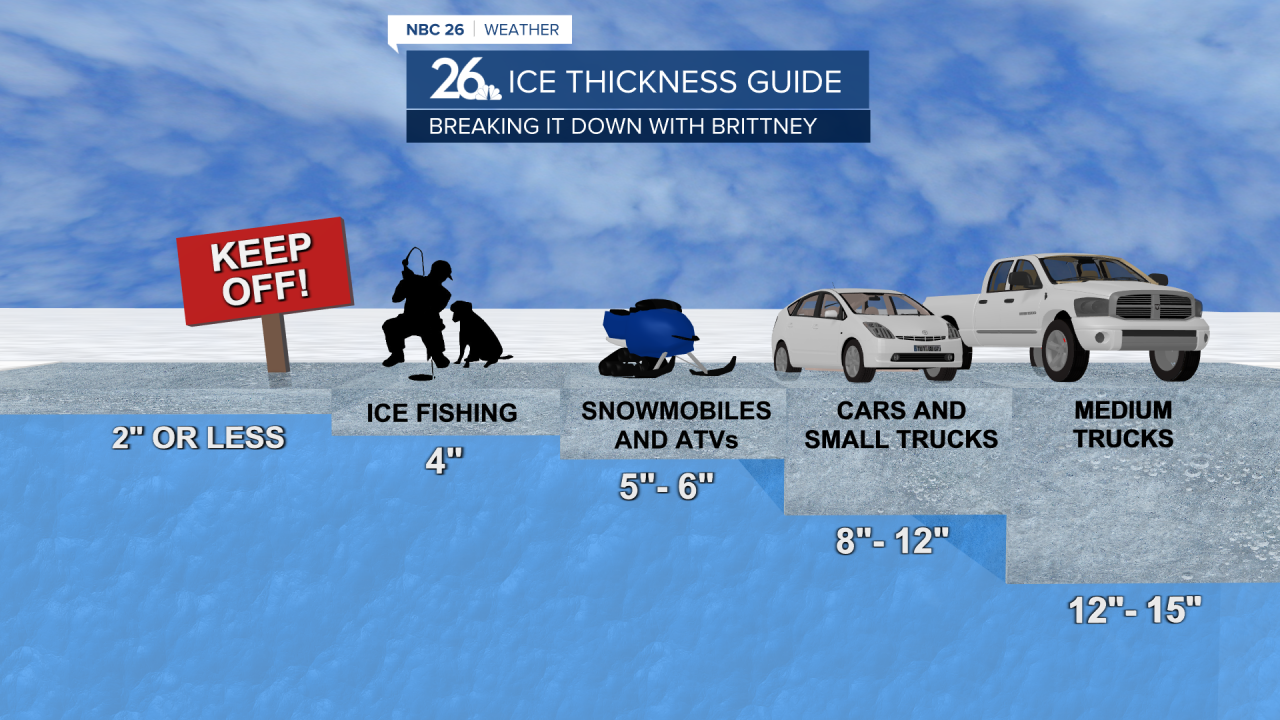GREEN BAY, Wis. (NBC 26) — While some of us dread the long winter months, some of us can't wait for the coldest snaps to strike. As the water turns to ice, before you take a step over that crack, there's some risks that keep repeating themselves.
Every weekend in January we've had an ice emergency and rescue occur. With temperatures this frigid, anglers are flocking to their ice houses, trying to reel in a big catch.
"It happens so fast, there is no such thing as safe ice, but better ice is going to be developed on the really cold nights that we have, with not a lot of wind." explained Michael Padden a Petty Officer for the Coastguard at Sturgeon Bay.
As the Bay begins to freeze, typically from southwest to northeast, the deepest waters freeze up last around Chambers Island.
But dangerous ice can be found in many places, like bends on the bay or the mouth of the Fox River, with colliding water beneath it. This movement below, creates ice that is 20% thinner and less reliable.
Just like the weather, ice is always changing.
Notice weeks ago, the line of open water and thin ice cutting to the head of the bay?
"Have you ever seen an ice breaker go through, it breaks up all the chunks and they float up to the middle of the channel and then they freeze like that, that's rubble ice." said Padden.
The Brown County Sheriffs' Office says barge traffic in early January may have weakened ice on parts of the bay.
"It can be very unstable because it has all the broken pieces, and it freezes in the thin spots in between, so there could be only 1 or 2 inches of ice right there." explained Padden.
An important thing to note before you head out on the ice, is the Coast Guard performs ice breaking operations on the bay until the Sioux Locks fully freeze in February.
By having this open and weak ice water channel, ice sheets have room to move around and break off from shore.
Meteorologist Brittney Merlot says, “There are a few things you can do before you head out onto the ice. If you see ice heaves and shoves, that's an indication of some weak ice sections nearby. Also, if it’s snowing outside, that snow acts as an insulator and keeps the ice warmer and weaker. Not to mention, if you hear a loud crack you should probably get out of your ice house and investigate what is going on, because chances are you could have broken away from shore. The cause, the wind."
It's called, wind stress. When gusty winds cause friction and force on the ice, weakening it and pushing it. Leading to life threatening accidents like the Bay has seen throughout January.
"Especially with what we call pressure ridges, so the wind pushes those pressure ridges and it breaks the thinner ice in between. Which breaks those shelves off." noted Padden.
Which was the case for the 27 stranded on a drifting ice chunk, when winds began gusting to 30mph at exactly 10am, just 15 minutes after the call for rescue came in.
Always be sure to check the weather forecast. Because it’s the strong south wind that is the leading culprit to becoming stranded on a chunk of ice.
Remember he frigid waters of Lake Michigan show no mercy. If you were to fall into the cold water you have 1 minute to get your breathing under control from the shock of the cold water. Only 10 minutes of meaningful movement to get out. And just one hour before you will lose consciousness.





